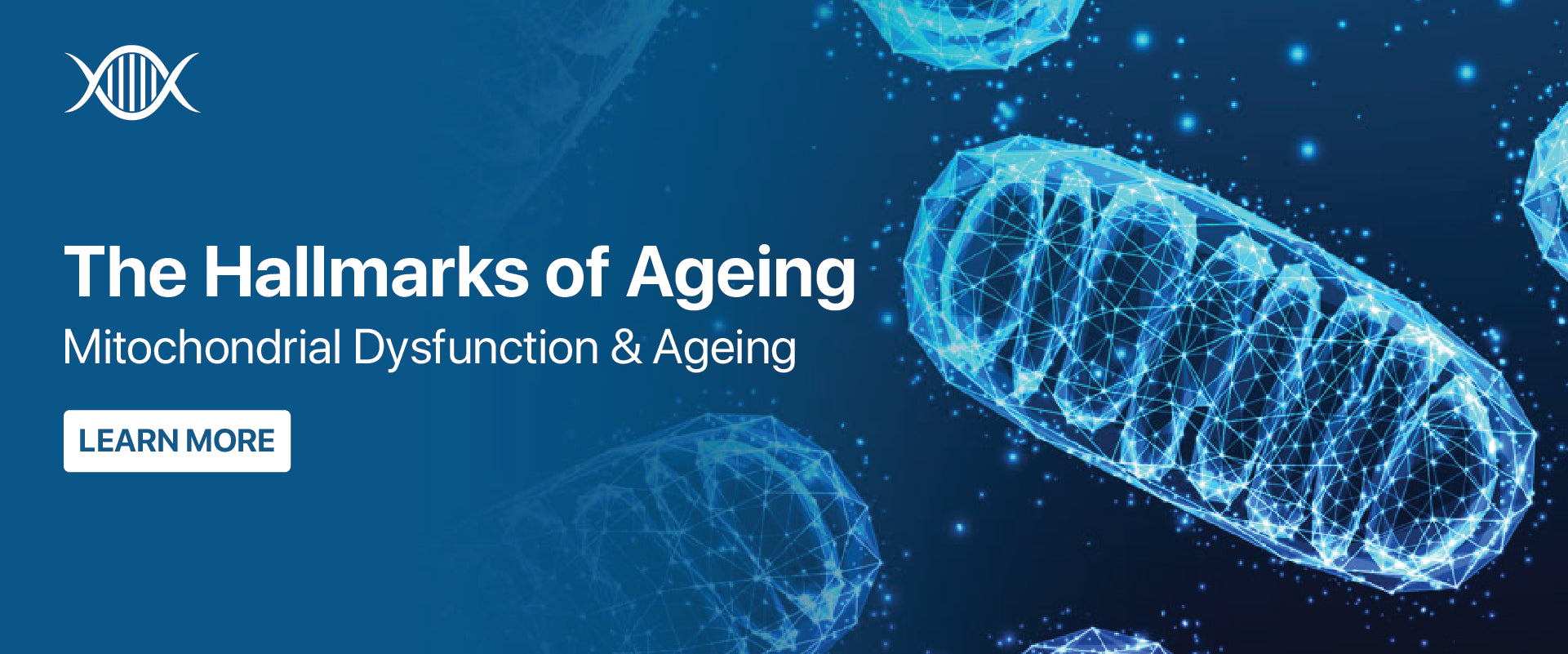Mitochondria are the cell's powerhouse, essential for life and crucial in cellular energy processes. Maintaining mitochondrial health is like discovering the fountain of youth for cellular rejuvenation, as mitochondrial dysfunction can lead to imbalanced energy conversion and accelerated cellular ageing. Regulation of energy metabolism by environmental variations is increasingly linked to age-related metabolic diseases like Alzheimer’s and Parkinson's, highlighting the critical role of mitochondrial oxidative phosphorylation (OXPHOS) in overall health. As ageing research progresses globally, including in India, understanding and enhancing mitochondrial function may offer promising avenues for combating age-related neurodegenerative diseases.
What is Mitochondria?
A mitochondrion (plural: mitochondria) is a membrane-bound organelle found in the cells of most eukaryotic organisms. Mitochondria are vital, membrane-bound organelles within eukaryotic cells, renowned as cellular powerhouses. Comprising an outer membrane, inner membrane, and matrix, mitochondria generate energy through cellular respiration, converting organic molecules into adenosine triphosphate (ATP). Beyond energy production, they influence cellular ageing processes, such as the cell cycle and apoptosis. Notably, mitochondria possess their DNA. These multifunctional organelles underscore their pivotal role in cellular functions, emphasising their significance in the workings of eukaryotic organisms.
Considering cellular rejuvenation, maintaining mitochondrial health is crucial. Mitochondrial dysfunction is a hallmark of ageing, leading to a decline in cellular energy production and contributing to various age-related conditions. So, how can I improve my mitochondrial health naturally? You can support mitochondrial function and overall cellular ageing by focusing on a healthy lifestyle that includes regular exercise, balanced nutrition rich in antioxidants and nutrients like CoQ10 and vitamin B, and stress management. This emphasis on mitochondrial health aligns with the broader question: Can mitochondrial health help us live longer? Indeed, ongoing research suggests that optimising mitochondrial function may contribute to longevity and healthy ageing by promoting cellular vitality and resilience.
Role of Mitochondria in the Human Body
Mitochondria are often referred to as the "powerhouses" of the cell because one of their main functions is to generate energy in the form of adenosine triphosphate (ATP). In addition, they play a role in various cellular processes, including the regulation of the cell cycle and cell growth, as well as the mediation of cell death (apoptosis).
- Energy Production: The primary function of mitochondria is to produce energy through cellular respiration. They convert nutrients, such as glucose and fatty acids, into ATP, a molecule that serves as the main energy currency of the cell.
- Metabolism Regulation: Mitochondria are involved in regulating the metabolism of carbohydrates, fats, and amino acids. They play a key role in breaking down and processing these molecules to generate energy.
- Apoptosis (Programmed Cell Death): Mitochondria are central to the regulation of apoptosis, a programmed cell death process essential for maintaining tissue homeostasis and eliminating damaged cells.
- Calcium Homeostasis: Mitochondria help regulate intracellular calcium levels, which is critical for various cellular processes, including muscle contraction and signal transduction.
- Cell Signalling: Mitochondria contribute to cellular signalling pathways, influencing cell differentiation, proliferation, and the cell cycle.
- ROS Regulation: Mitochondria are a major source of reactive oxygen species (ROS). While excessive ROS can be harmful, moderate levels are involved in cellular signalling and defence mechanisms.
- Heat Production (Brown Adipose Tissue): In specialised brown adipose tissue, mitochondria contribute to non-shivering thermogenesis by generating heat, which is important for temperature regulation.
- Genetic Inheritance: Mitochondria contain their genetic material (mitochondrial DNA), and mutations in mitochondrial genes can lead to various inherited disorders.
What is Mitochondrial Dysfunction?
As we look into the latest advancements in anti-ageing research, one pressing question arises: Can you reverse mitochondrial damage? As we age, mitochondrial function tends to decline, leading to a reduction in energy production. This decline is associated with an increased production of reactive oxygen species (ROS), which can cause cellular damage and contribute to the ageing process. When the mitochondria fail to function normally or meet the body's energy requirements, it leads to mitochondrial dysfunction. This dysfunction manifests in various ways, such as seizures, strokes, digestion issues, walking and speech impairments, as well as heart and kidney problems, affecting multiple organs and contributing to neurodegenerative diseases. The causes of mitochondrial dysfunction are varied and complex, highlighting the intricate nature of ageing research.
Exposure to environmental factors
- Pharmaceutical drugs - Inhibit electron transport chain protein complexes and inhibit ATP synthase, leading to mitochondrial dysfunction.
- Chemicals - Mitochondria are highly susceptible to chemicals. The charge difference between the mitochondrial matrix and the cytosol allows for positively charged and lipophilic chemicals to accumulate within the mitochondrial matrix.
- Cigarette smoke - Tobacco smoke induces cardiac mitochondrial damage and dysfunction. It directly inhibits or inactivates a few mitochondrial proteins in the heart.
Genetic abnormalities
- Mitochondrial DNA - Mutations or inherited changes in mitochondrial DNA, lead to problems with the growth, development, and function of the body’s systems. It destroys the ability of mitochondria to generate energy for cells.
On the cellular level, it is caused by
- Reduction of the electrical and chemical transmembrane potential of the inner membrane.
- Improper functioning of the electron transport chain.
- Irregular transport of metabolites into mitochondria.
Correlation Between Mitochondrial Dysfunction and Ageing
A strong correlation has been found between various aspects of age-related decline and mitochondrial dysfunction, intricately linked to the ageing process. The cellular powerhouses that produce energy, the mitochondria, are prone to damage over time that can impair function. The efficiency of mitochondrial respiration tends to decline with age, leading to a rise in reactive oxygen species (ROS) production and a fall in ATP synthesis.
In addition to changes in turnover and dynamics within the mitochondria, malfunctioning mitochondria are caused by a build-up of mutations in the mitochondrial DNA (mtDNA). This malfunction results in a cascade of events, including heightened apoptosis and impaired cellular signalling, in addition to a reduction in the energy supply within the cell. Age-related diseases like neurodegenerative disorders, cardiovascular diseases, and metabolic dysfunction are closely linked to mitochondrial dysfunction.
Age-related Diseases that can be Caused by Mitochondrial Dysfunction
Ageing is a complex natural phenomenon that is characterised by the decline of tissue and organ functions, leading to an increased risk of disease and mortality. Mitochondrial dysfunction is one of the hallmarks of ageing and is linked to numerous age-related diseases, including metabolic syndrome, neurodegenerative disorders, cardiovascular diseases, and cancer.
Alzheimer's disease
Increased production of reactive oxygen species and oxidative stress leads to mitochondrial dysfunction, enhancing the processing of amyloid precursor protein to form Aβ. This escalation in protein formation is associated with the development of Alzheimer’s disease (Leuner et al., 2012).
Parkinson's disease
Mitochondrial dysfunction in Parkinson's disease hampers energy production, causing oxidative stress and neuronal damage. Characterised by dopaminergic neuron degeneration, Parkinson's is exacerbated by dysfunctional mitochondria, impairing effective cellular regulation (Reeve et al., 2018).
Huntington's disease
In Huntington's disease, the complex interaction of transcription factors HSF1, p53, and PGC-1α induces mitochondrial dysfunction. Dysregulation in this network influences the pathogenesis of Huntington's, suggesting potential treatment targets to mitigate mitochondrial impairment (Intihar et al., 2019).
Diabetes
Diabetes-related mitochondrial dysfunction exacerbates insulin resistance, diminishing cellular energy production. Dysregulated metabolism worsens hyperglycemia and impairs glucose utilisation. Understanding and targeting mitochondrial pathways may offer new therapeutic approaches for diabetes and its effects (Kwak et al., 2010).
Heart disease
Mitochondrial dysfunction triggers the excessive production of reactive oxygen and nitrogen species, leading to inflammatory vascular reactions and the development of atherosclerosis (Perrotta et al., 2011b).
Stroke
The Calcium overload, the opening of mitochondrial permeability transition pores, and increased reactive oxygen species production contribute to neuronal death in stroke (F. Yan et al., 2022).
Cancer
Mitochondrial dysfunction in cancer modifies apoptotic signalling, heightens oxidative stress, and impairs cellular energy production. This supports the survival and proliferation of malignant cells, promoting tumour growth, genomic instability, and evasion of cell death, contributing to cancer progression (Hsu et al., 2016).
How Can We Prevent Mitochondrial Dysfunction?
Mitochondrial dysfunction, characterised by reduced cellular energy production, contributes to various health issues. While complete avoidance may be challenging, lifestyle choices can mitigate its effects. Regular exercise enhances mitochondrial function and overall cellular health. A well-balanced diet rich in antioxidants, vitamins, and minerals supports mitochondria and combats oxidative stress.
Reducing exposure to environmental pollutants minimises the risk of mitochondrial dysfunction. Maintaining a healthy weight and managing conditions like diabetes positively impact mitochondrial health. Adequate sleep is crucial to preventing mitochondrial stress. Combating chronic stress through practices like yoga or meditation benefits mitochondrial function. Lastly, ensuring proper hydration is vital for overall cell health, including that of the mitochondria.
Conclusion
In conclusion, mitochondria play a vital role as cellular powerhouses, impacting energy production, metabolism, and cell signalling. Maintaining mitochondrial health is crucial for combating age-related diseases like Alzheimer's and Parkinson's. Lifestyle choices such as exercise, balanced nutrition, stress management, and reducing environmental exposures can support mitochondrial function. Advances in research and targeted therapies offer promising avenues for promoting cellular rejuvenation and overall well-being, potentially extending healthy ageing and longevity.
FAQs
How can I repair my mitochondria naturally?
Enhance your diet with proteins from organic meats, fish, nuts, seeds, and eggs. Combine this with regular exercise, stress management, and adequate sleep to support mitochondrial health.
What are the latest advancements in anti-ageing research?
Recent advancements include targeting mitochondrial dysfunction by boosting NAD+ levels with nicotinamide mononucleotide (NMN) supplementation to improve cellular energy and combat ageing.
Can improving mitochondrial health help us live longer?
Yes, improving mitochondrial health can extend lifespan by reducing oxidative stress and enhancing cellular functions with antioxidants and supplements like NMN & Ca-AKG.
Can you reverse mitochondrial damage?
Recent research suggests that mitochondrial damage can be reversed through cellular energizers that restore mitochondrial function, potentially prolonging lifespan and improving overall health.
What are the two types of mitochondrial dysfunction?
Mitochondrial dysfunction can be primary, due to inherent mitochondrial defects, or secondary, caused by external factors like toxins or other cellular disruptions.
























Leave a comment
All comments are moderated before being published.
This site is protected by hCaptcha and the hCaptcha Privacy Policy and Terms of Service apply.